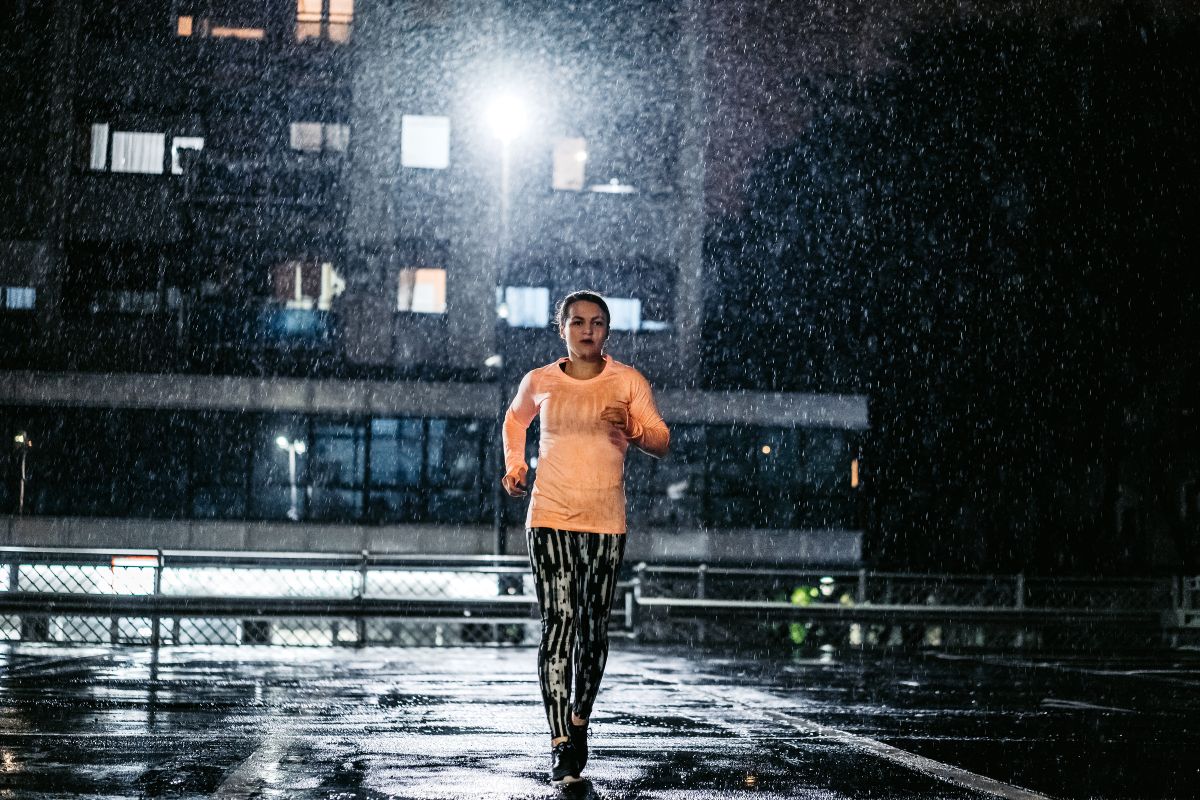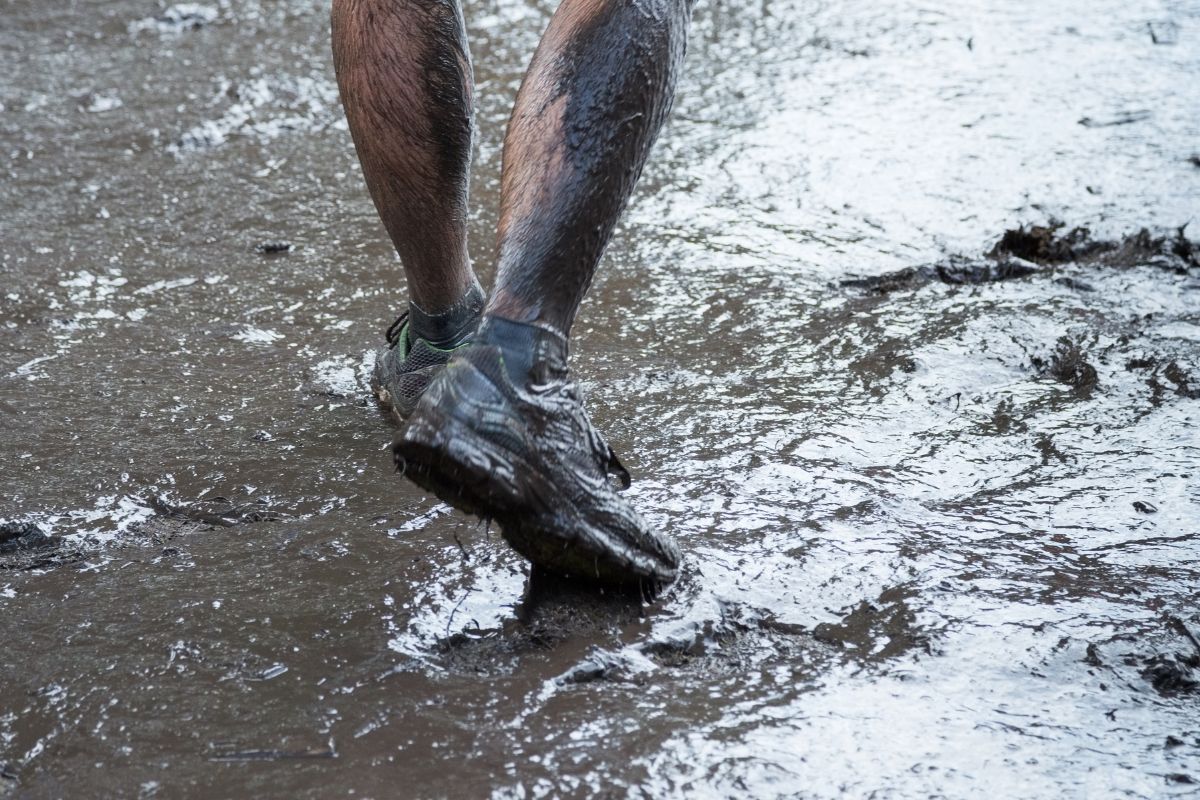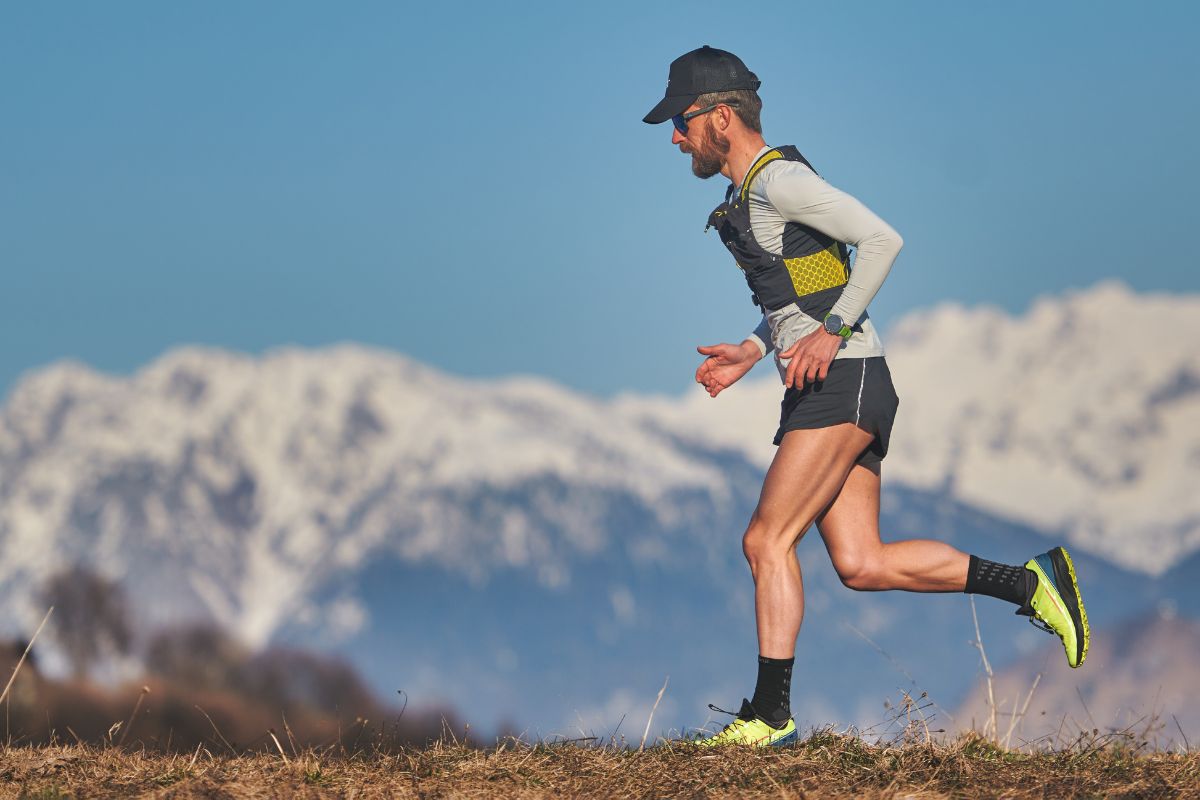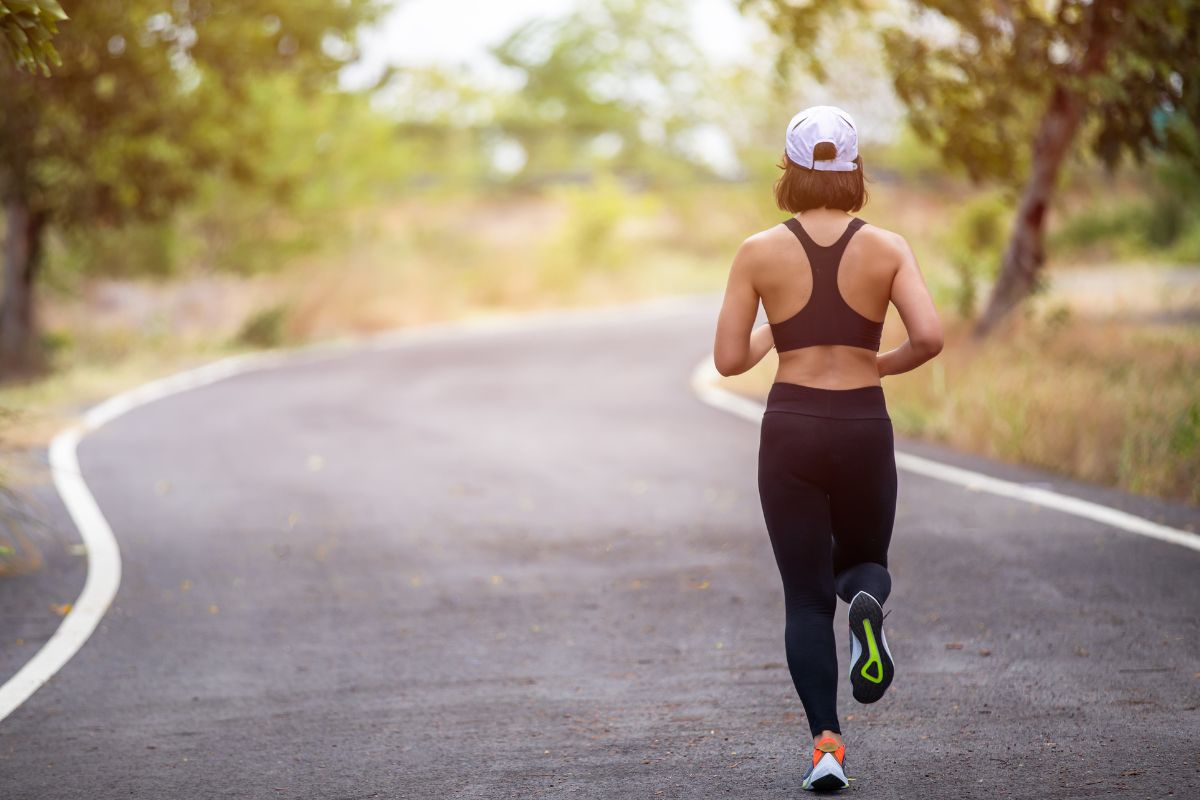Runners who pound the pavement frequently are determined to finish their runs at all costs. Whether it is hot, cold, wet, or dry, no matter what the weather is, runners will run in all kinds of elements.

Even so, it’s always a lot easier to run in dry weather, as rain can present all kinds of problems, particularly with athletic clothing.
Rainwater adds weight to clothing, which can make covering more distance difficult, as you have to deal with extra weight.
The water can also make you feel colder while you run, as well as cause chafing from the extra friction from the clothing.
You can solve some of these issues by choosing the right clothing for running in the rain.
You’ll find some examples in this article, including some tips on running in the rain to help you when you next find yourself in a downpour.
Tips For Running In The Rain
Before we cover some examples of clothing for running in the rain, here are some tips that can help you when doing so.
Use Anti-Chafing Balm
Water adds friction that can lead to chafing while you run. Anti-chafing balm reduces friction so that your clothes and skin glide smoothly against each other.
Use the balm on areas that have seams and parts that frequently experience friction, like the inner thighs or feet.
Attitude Adjustment
If you’re going to run in a downpour, you will get wet. It won’t do any good to think about how much better running on a sunny day is.
Instead, think about how resilient you are to take on the challenge of running in the rain.
Naturally, you’re not going to break any records on a wet day, but mentally, you’ll be a lot stronger once you’re done!
Don’t Think About Pace
Following on from the last point, you will run slower in the rain. Don’t worry if your pace changes for the worse.
When you’re running in the rain, it’s a better idea to run for a certain amount of time instead of a particular distance.
Instead of focusing on getting a particular number of miles under your belt, think about how long you would have run if the weather was pleasant.
Then, run for that amount of time, focusing on putting in the effort to get past the rainy circumstances.
Get Into Dry Clothes
Once you’re back home after your rainy run, either change into some clean, dry clothes or do so after a hot shower.
Doing this immediately after your run reduces the chance of becoming ill afterward. It’s also more comfortable compared to staying in wet clothes!
Changing your clothes straight after a run might be more difficult if you have young children or pets that need attending to, but this is very important to avoid sickness later.
You don’t want to pass on a nasty bug to your children, so they can wait for a few minutes while you get into something warm!
Dry Your Trainers
Once you’ve warmed up nicely, you’ll need to dry your shoes so they’re not damp for your next run.
Remove your shoe insoles, then stuff them with old newspaper to soak up all the moisture.
If your shoes are particularly wet, place them over a heating vent to speed the process up.

What To Wear When Running In The Rain
Now we can get into what to wear when running in the rain! Make sure that you have the items listed below in your wardrobe to prepare you for wet weather.
Grippy Trainers
Waterproof shoes aren’t totally necessary to run in the rain, but it’s very important to wear trainers with good traction, particularly if you plan on taking on any hills.
Grippy shoes will prevent you from slipping on wet surfaces and falling over later. This is a very important safety issue, so always make sure that your running shoes have enough traction.
Dry Socks
Wearing moisture-wicking socks helps to keep your feet dry in wet weather. Go for thinner socks instead of thicker ones, and look out for ones that have moisture-repelling properties.
These can be found online or at special athletic stores.
Fitted Pants/Shorts
Wearing fitted clothing can help prevent the extra fabric from rubbing against your skin, reducing the chance of chafing.
Spandex tights and bottoms are ideal for this, but if you prefer looser clothing, you may prefer to wear leggings underneath your shorts instead.
Waterproof Outerwear
A waterproof outer layer will repel any moisture from rainwater, but make sure that it’s lightweight enough to avoid overheating.
Look out for jackets with reflective details that help keep you noticed in gray, gloomy weather.
Outerwear with elasticated hoods can also defend your head and neck from water, while the elastic will help keep the hood in place while you run.
Moisture Wicking Shirt
A moisture-wicking base layer will keep your skin dry underneath your clothing, but it should also be light enough to avoid dragging you down with excess weight on your run.
Even though a base layer should be lightweight, make sure that it keeps you relatively warm as well.
This will keep you comfortable in cooler temperatures, as well as help prevent sickness later.
Running Vest
Unlike a base layer, a running vest is worn over a base layer to deliver more warmth. Make sure that your running vest is waterproof and easy to remove quickly while on the go.
Running vests in neon colors, like green, yellow, or pink, can be helpful, as they keep you noticed while running in darker conditions.
Illuminated Accessories
If you plan on running in the dark, you need to make sure that you are easily noticeable to avoid car accidents on the road.
You can find headlamps with LED lights to wear around your head, or go for clothes with reflective panels that ensure you are visible in darker settings.
Final Thoughts
Running in the rain isn’t as enjoyable as on a sunny day, but your clothing choice can help make your runs easier while you’re on the go!
Choose lightweight, moisture-wicking attire that keeps you dry in the rain. Fitted clothes, like leggings and tights, can help prevent chafing from occurring from extra friction too.
Most importantly, while the rain won’t stop you from having a good run, never run in lightning! Doing so increases the chance of you getting struck by lightning while on your run.
Wait until the weather changes, or save your run for another day. It’s best to be safe than sorry!
- Can Dogs Run Faster Than Humans? (Running With Your Furry Friend) - October 4, 2022
- 10 Doggie Fun Runs You Will Love [Ultimate Guide] - October 4, 2022
- What Are Division Results In Running? - October 4, 2022








